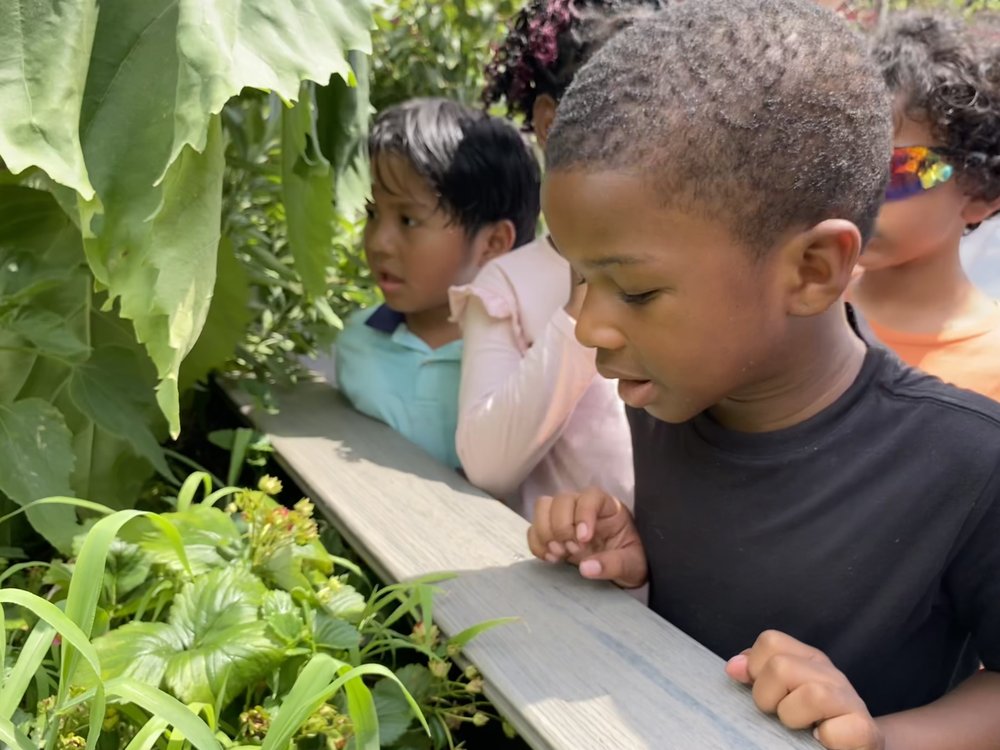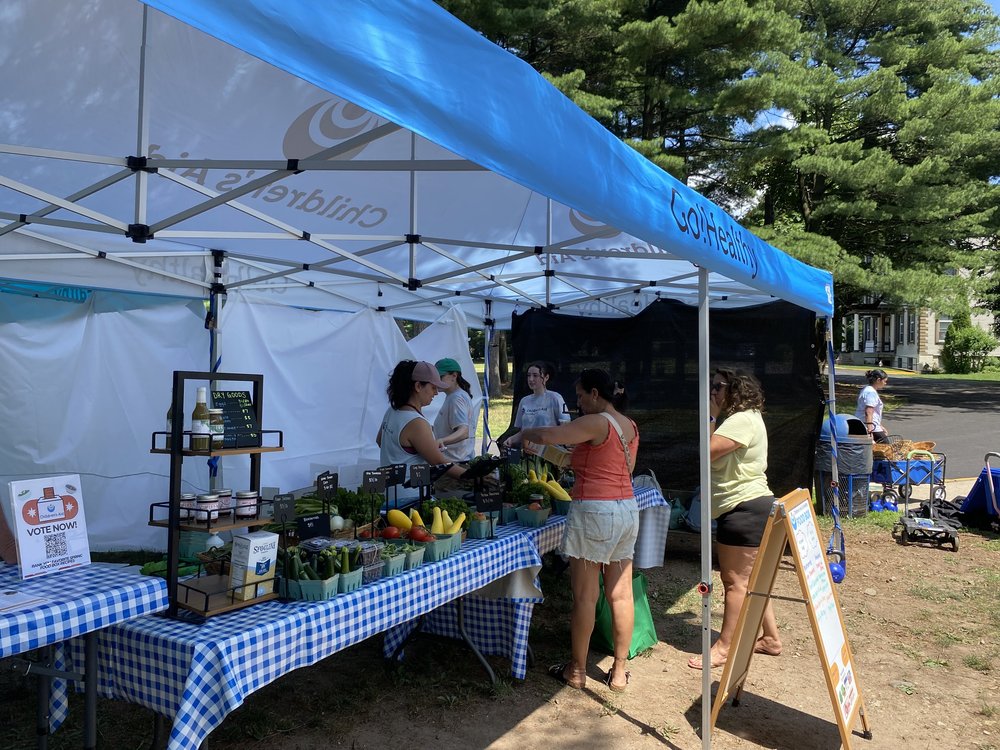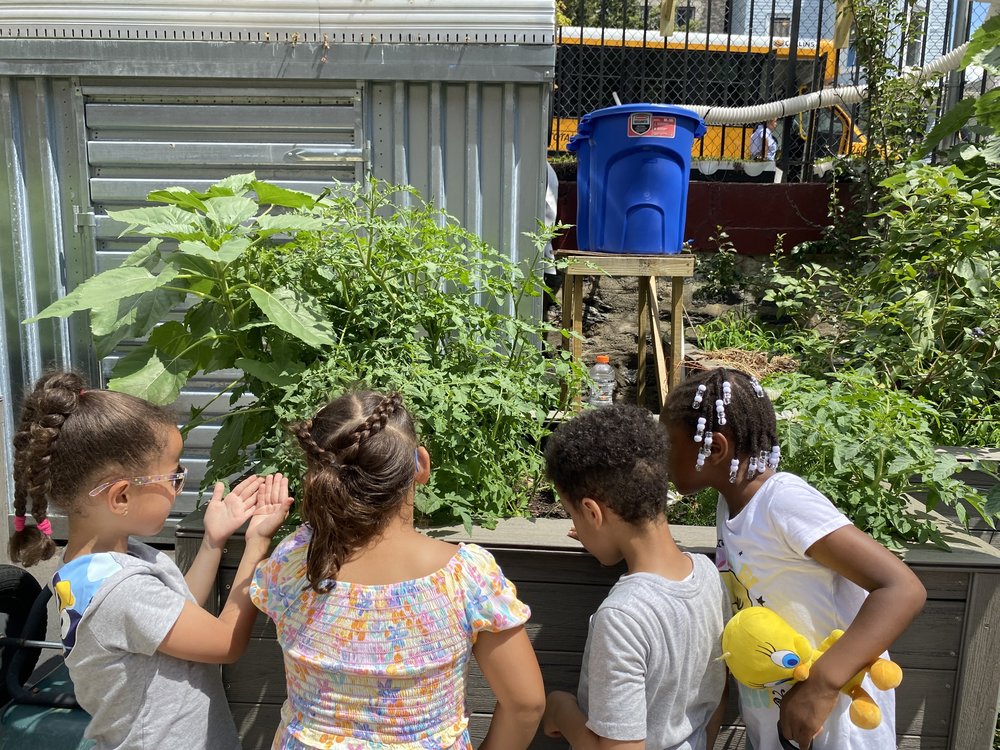Trump tax bill guts $29M program helping New Yorkers eat healthier on a budget
July 16, 2025, 6:30 a.m.
The new federal spending bill cuts funding for SNAP-Ed, a program that aims to encourage healthy diets and promote nutritious food.

At Fairmont Neighborhood School in the Bronx last week, an eagle-eyed kindergartener just tall enough to peer over a row of elevated flower beds spotted a small red bulb covered with tiny seeds.
“The strawberries are growing!” he exclaimed as the rest of his Bronx summer school classmates rushed over to see the plant.
Thirty miles south on Staten Island’s North Shore, residents lined up for a bag of affordable fruits and vegetables, filled with items they can’t always find in their neighborhood and recipes to learn how to cook with them.

“There's so little access to fresh produce, and groceries are hideously priced,” said Sarah Blas, who picked up food with her twin 9-year-old daughters.
For the last decade, these dual programs run by the nonprofit Children’s Aid have taught families how to eat healthier on a budget. But now, under President Donald Trump’s new spending bill, the long-standing initiatives and others like them across the state will shut down by October, unless they find a way to plug the funding gap.
Trump’s massive tax cut bill is meant to cut waste, fraud and abuse. It slashes federal spending on social safety net programs like Medicaid and the Supplemental Nutrition Assistance Program, or SNAP, that help low-income people pay for groceries. It also cuts SNAP’s educational arm, known as SNAP-Ed. For the last 32 years, that funding has helped low-income families learn how to cook nutritious meals on a limited income.
New York will lose $29 million in SNAP-Ed dollars, state officials said. The programs helped more than 2.2 million residents last year fight food insecurity and improve their health through nutritionists, obesity prevention training, workshops on reducing local food waste, healthy cooking and improving access to fresh produce, according to the state.

Darren O’Sullivan, a spokesperson for the Office of Temporary and Disability Assistance, which administers SNAP-Ed funding, said cutting these dollars will hurt residents and “only increases the risk that New Yorkers in need will experience food insecurity, health issues, and economic hardship.”
Given the deep cuts to other social safety net programs, it’s unlikely the state will be able to fill the deficit. State officials expect 300,000 people will lose some or all of their SNAP benefits with newly passed work requirements. New York officials estimate they’ll have to absorb as much as $1.2 billion in new costs to keep the SNAP program going.
Employees at Children’s Aid say the cuts would harm families they’ve worked with for years. The organization, one of 18 providers across the state, receives about $1 million in federal funding a year.
“It’s just devastating to see programs that we've built up and that have become so beloved in our communities. … It's helped them have healthier habits and change their lives,” said Taisy Conk, director of the food and nutrition programs at Children's Aid.
“It's really sad looking around and knowing that that all has to come to an end.”
Trump and congressional Republicans have argued the bill fulfills the administration’s priorities of extending the 2017 tax cuts and boosting spending on immigration enforcement. All of New York’s seven House Republicans voted for the measure, including Nicole Malliotakis, who represents Staten Island. Her office didn’t respond to a request for comment.

Once a week, New Yorkers on Staten Island’s North Shore can haul home bags of low-cost fresh farm produce. Those with SNAP benefits pay $7 for a bag, while those without pay $14. The same bag of produce could cost twice as much at the grocery store, the workers said.
"It was an inexpensive, healthy way to eat," said Leah Bennett, 60, who first started coming to the Food Box program 10 years ago when she used to receive SNAP benefits. Now, she no longer needs SNAP but the affordable bag of goods is a huge help amid rising grocery prices and cost of living expenses.
“That's why I try to tell anybody, especially single moms, older folks who still cook,” Bennet said. “You can't beat it.”
Last year, the program distributed 6,000 bags of produce across its four sites. Children’s Aid employees are also there to help people understand how to prepare the vegetables. They also hand out samples of the week’s recipe.
At Fairmont Neighborhood School in the Bronx, SNAP-Ed dollars help teach young kids about foods they may not be eating at home. During a recent class, instructor Aaron Mandell passed around different herbs for the students to smell, such as sage, lemon balm and peppermint.
“It’s like toothpaste,” one kindergartener yelled.
Zina Zaezuela, 7, she’s learning to eat healthy and talked about the one time she tried a chicken dish that was a little sour.
“I didn't like it, but I liked it a little, but I eat it because it was healthy. I knew it was healthy because it was sour and lemon makes you good,” she said.
Zaezuela said if she couldn’t come back to the gardening class next year, “I would say to my mom or dad or whoever with me, I would say 'Can we go to a garden and smell some plants?'”
Federal food assistance cuts would crush 1.8M NYers, city officials say Victims of food benefits theft sue NY over outdated tech they say puts them at risk